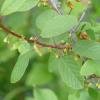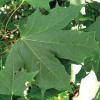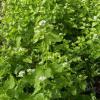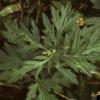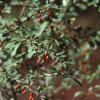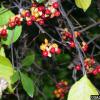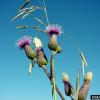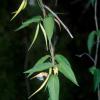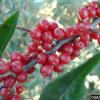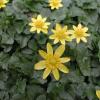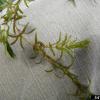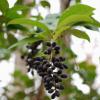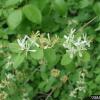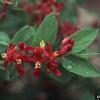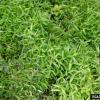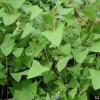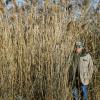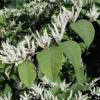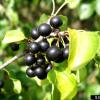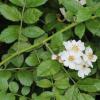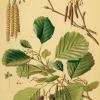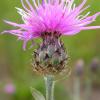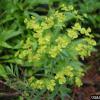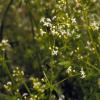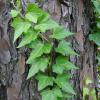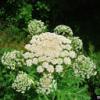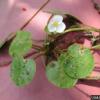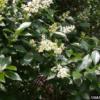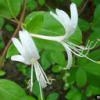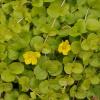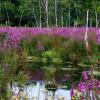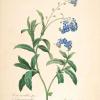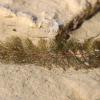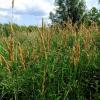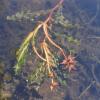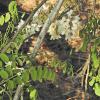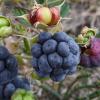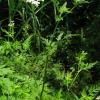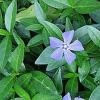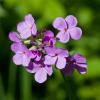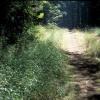Invasive Species of Tompkins County, New York
About one-third of the plant species in New York State are non-native but only a small percentage of these are considered "invasives." Learning to recognize these aliens is an important first step in controlling them. Left alone, they can spread and eventually replace our native flora due to different advantages they may have. Some, like the honeysuckles (Lonicera spp.), begin leafing out earlier in the spring than our natives, thereby depriving the native species of the sunlight they need. Many find that the local environment lacks the animals and plants that kept them in check in their native country. Several species produce toxins in the soil that kill the growth of neighboring plants. Since each has its own exploitation strategy, it is good to understand its success mechanism, especially when it comes to removing them.
As is the case with many problematic situations, prevention is unarguably the first line of defense. In many cases we introduce these aliens unknowingly as hidden seeds on our food or wood products. A number of our invasive plants have characteristics that encourage their cultivation: many are attractive, grow fast, and need little attention. We even spread them unintentionally on our hiking boots and car tires, as many invasives start their journeys along roadsides.
Prevention makes even more sense when one considers the options available for removing the invaders. Simply pulling up rhizomatous plants will often help to propagate them. Applying herbicides is often ineffective, too costly, or dangerous to the environment. Mowing is effective in many cases but it must be repeated several times per season and then repeated for several years before the energy is depleted in the root system. The best advice here is to understand why the particular invader is so successful and minimize or eliminate that advantage.
The following is a list of the common invasive plants in the Finger Lakes area with links to sites where you can find more information. (For more compact, printable list click here.) The levels indicate relative problem in the Cayuga Lake basin as determined by Cornell field botanist F. Robert Wesley. (Level 1 is worst, most concern; Level 2 is moderately bad; Level 3 is less problematic but still of concern.) Please contact us if you have any questions on this subject.
Invasive Plants
|
Asian bittersweet Level 1 Photo by James R. Allison, GA Dept of Nat'l Res., Bugwood.org |
||
|
pale swallowwort Level 1 Photo by JM Randall, The Nature Conservancy, Bugwood.org |
||
|
lesser celandine Level 1 Photo by Leslie J. Mehrhoff, University of Conn., Bugwood.org |
||
|
Amur River privet Level 1 Photo by Nancy Loewenstein, Auburn University, Bugwood.org |
Maack's honeysuckle Level 1 Photo by Leslie J. Mehrhoff, University of Conn., Bugwood.org |
|
|
Tartarian honeysuckle Level 1 Photo by Patrick Breen, Oregon State University, Bugwood.org |
stilt-grass Level 1 Photo by Chris Evans, Illinois Wildlife Action Plan, Bugwood.org |
mile-a-minute vine Level 1 Photo by Leslie J. Mehrhoff, University of Conn., Bugwood.org |
|
Japanese knotweed Level 1 Photo by Leslie J. Mehrhoff, University of Conn., Bugwood.org |
||
|
European black alder Level 2 Photo by Zelimir Borzan, University of Zagreb, Bugwood.org |
||
|
European barberry Level 2 Photo by Leslie J. Mehrhoff, Univ. Connecticut, Bugwood.org |
||
|
black swallowwort Level 2 Photo by Leslie J. Mehrhoff, Univ. Connecticut, Bugwood.org |
||
|
Eurasian water-milfoil Level 2 Photo by Rob Routledge, Sault College, Bugwood.org (taken MI) |
||
|
Sakhalin knotweed Level 2 Photo by Tom Heutte, USDA Forest Service, Bugwood.org |
||
|
slender false brome Level 4 - newly introduced or troublesome but not on Wesley list yet Photo by The Nature Conservancy Archive, Bugwood.org |



